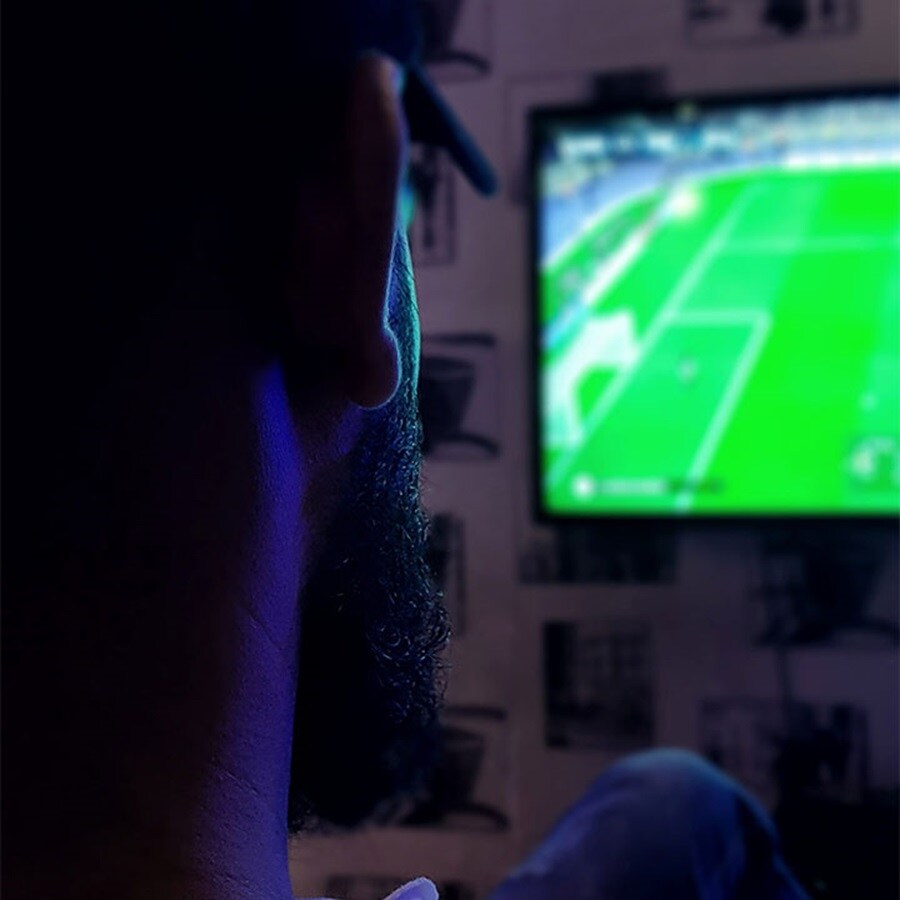The FIFA World Cup is a spectacle unlike any other in football or indeed the world of sport. A matter of billions tune in when it comes around every four years, so it’s little wonder the competition is affectionately known as ‘the greatest show on Earth’.
This year’s tournament in Qatar is the first-ever edition of a winter World Cup, but appetite for watching the action unfold has continued to be strong – and that’s certainly music to the ears of retailers who sell televisions.
According to GfK’s research, a World Cup year quite simply equals a good year for TV sales. For example, the 2018 World Cup in Russia prompted a 2.9% growth in the global TV market, with 221 million units being sold to consumers who wanted an upgrade in their home for the tournament.
A winter competition this time around means the usual outdoor festivals of football for the European public haven’t been possible, leading more and more fans to watch their nation from the comfort of their own home. In fact, TCL’s survey has shown that a massive 86% of Europeans will watch the 2022 World Cup at home – with a subsequent 8% of respondents saying they’d upgrade to new tech for the occasion.

However, while that would appear to be nothing but good news for TV retailers across the continent, the reality has been a different matter.
Statista anticipates that TV sales volumes across Europe in 2022 will fall to their lowest level since 2014, at 67.4 million units – representing a -12.9% change year-on-year. Meanwhile, the world’s leading TV manufacturer Samsung has announced weak large panel (TV and monitor) sales figures for Q3 2022 in the build-up to the World Cup, and Reuters reports that the second-biggest manufacturer LG suffered a similar slump.
It’s not been for the want of trying, either. Premium retailers like Samsung and LG have adopted frequent promotions throughout 2022 to get new TVs into European homes, but consumer demand hasn’t been as strong as in previous World Cup years.
As analysed in our inflation insights article, consumer demand across multiple sectors has been fluctuating dramatically throughout the year. The likes of oil, energy and food prices rising has sent inflation to unprecedented levels, leading consumers to prioritise discretionary, more essential products rather than non-discretionary items like TVs.
The seasonality could also suggest that consumers have been waiting for Black Friday, Christmas or January deals rather than investing before the World Cup got under way.
That said, another common theme during the financially challenging times of 2022 has been consumers swapping premium brands for more budget items, and Chinese manufacturer Hisense is reaping the benefits in the European TV market.
Hisense reported rapid year-on-year growth of 18% globally in the first nine months of 2022, including 24 million TV sales in Europe and a market share surge from insignificance to fourth in the charts.
Some individual European countries have also returned strong TV sales in the build-up to the World Cup despite the overall 2022 figures. UK retailer OnBuy, for example, saw home cinema system sales spike by a remarkable 1,769% in the seven days before the tournament’s opening game.

Elsewhere, fellow UK retailer AO World has seen its revenue slump by 17% in the six months to September, but it’s pinning hopes on a strong World Cup showing by England to boost tech sales (as per This Is Money).
“Any World Cup gives our business really positive momentum around sales for things like TVs. The further England go in the competition, normally the more TVs we sell,” said John Roberts, AO Founder and Chief Executive.
In the world of logistics, fluctuations in demand mean the ability to speed up and slow down the supply chain is crucial when it comes to balancing operations.
The TV sales figures of previous World Cup years (or indeed hopes on a particular nation’s success) will have seen some retailers boost inventory to cater to a surge in orders. If such a surge hasn’t materialised, work will need to be done to manage stock accordingly and prevent an overstocking crisis.
It’s almost as difficult to predict the winner of the World Cup itself as it is for TV manufactures to plan the level and location of their inventory – given the current times of schedule reliability challenges, extreme volatility in transportation pricing and fluctuations in consumer demand. As such, it’s safe to say end-to-end supply chain management has never been more important. To prevent bottlenecks leading to unnecessary upstream or downstream costs, production / multi-modal transportation capacity management and destination overflow capacity solutions all need to be integrated. This will maximise supply chain flexibility and enable businesses to absorb individual changes in their logistics operations.
As we move towards 2023, the European TV market is expected to improve slightly according to Statista, but figures will remain fairly stagnant and new EU regulations could further impact the industry.
Digital Trends reports that the EU will bring new standards to its Energy Efficiency Index (EEI) from 1st March 2023, limiting power consumption for electronics within the member nations. Right now, there isn’t a single 8K TV on the market that meets the regulations and can subsequently be sold in the EU.
It remains to be seen whether the new EEI terms will change or if any solution can be found – such as a lower-quality EU picture mode for 8K TVs – but it’s clear that if the legislation does stay in place, the reverberating impact will certainly be felt across Europe in 2023.
无论您需要什么,我们都可以随时为您提供帮助
I agree to receive logistics related news and marketing updates by email, phone, messaging services (e.g. WhatsApp) and other digital platforms, including but not limited to social media (e.g., LinkedIn) from A. P. Moller-Maersk and its affiliated companies (see latest company overview). I understand that I can opt out of such Maersk communications at any time by clicking the unsubscribe link. To see how we use your personal data, please read our Privacy Notification.
By completing this form, you confirm that you agree to the use of your personal data by Maersk as described in our Privacy Notification.
